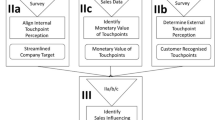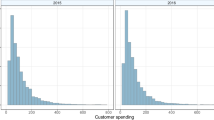Abstract
The growing importance of online social networks where people share information with others leads to the emergence of viral marketing, a new way to promote the sales of products. A derivation of classical Influence Maximization (IM) problem is the Profit Maximization (PM) problem that we focus on in this paper. We propose the PM problem with a cardinality constraint in order to make it closer to the real marketing activities. Without a fixed and pre-determined budget for seed selection, the profit spread metric of PM considers the total benefit and cost. The difference between influence spread metric and profit spread metric is that the latter is no longer monotone and lose the property of submodularity in general. Due to the natural form as the difference between two submodular functions, the profit spread metric admits a DS decomposition. What matters is that we design a Marginal increment-based Prune and Search (MPS) algorithm. From the perspective of marginal increment, MPS algorithm can compute profit spread more directly and accurately. Extensive experiments demonstrate the effectiveness and outperformance of our algorithm.






Similar content being viewed by others
References
Bai W, Bilmes J (2018) Greed is still good: maximizing monotone submodular + supermodular functions. In: Dy J, Krause A (eds), 35th international conference on machine learning (ICML 2018), LNCS, PMLR, vol 80, pp 304–313
Borgs C, Brautbar M, Chayes J, et al (2014) Maximizing social influence in nearly optimal time. In: 25th ACM-SIAM symposium on discrete algorithms, Society for Industrial and Applied Mathematics, USA, pp 946–957
Chen W, Wang C, Wang Y (2010) Scalable influence maximization for prevalent viral marketing in large-scale social networks. In: ACM SIGKDD international conference on knowledge discovery and data mining, ACM, New York, pp 1029–1038
Doo M, Liu L (2014) Probabilistic diffusion of social influence with incentives. IEEE Trans Serv Comput 7(3):387–400
Erkol Ş, Castellano C, Radicchi F (2019) Systematic comparison between methods for the detection of influential spreaders in complex networks. Sci Rep 9:15095
Even-Dar E, Shapira A (2007) A note on maximizing the spread of influence in social networks. In: Deng X, Graham FC (eds), Internet and network economics. WINE 2007. LNCS, vol 4858, Springer, Berlin, Heidelberg, pp 281–286
Feldman M, Naor J, Schwartz R (2011) A unified continuous greedy algorithm for submodular maximization. In: 52nd annual symposium on foundations of computer science (FOCS’11), IEEE Computer Society, USA, pp 570–579
George D (2020) Google, Facebook and Amazon are the only winners in Ecommerce. https://www.entrepreneur.com/article/328478. Accessed 5 Sep
Goyal A, Lu W, Lakshmanan LVS (2011) SIMPATH: an efficient algorithm for influence maximization under the linear threshold model. In: 13th international conference on data mining, IEEE, Vancouver, BC, pp 211–220
Gupta A, Roth A, Schoenebeck G, Talwar K (2010) Constrained non-monotone submodular maximization: offline and secretary algorithms. In: Saberi A (eds.), Internet and network economics. WINE 2010. LNCS, vol 6484, Springer, Berlin, Heidelberg, pp 246–257
Iyer R, Bilmes J (2012) Algorithms for approximate minimization of the difference between submodular functions, with applications. In: 28th conference on uncertainty in artificial intelligence (UAI’12), AUAI Press, Arlington, Virginia, pp 407–417
Kempe D, Kleinberg J, Tardos E (2003) Maximizing the spread of influence through a social network. In: 9th ACM SIGKDD international conference on knowledge discovery and data mining, ACM, New York, pp 137–146
Kempe D, Kleinberg J, Tardos E (2005) Influential nodes in a diffusion model for social networks. In: Caires L, Italiano GF, Monteiro L, Palamidessi C, Yung M (eds), Automata, languages and programming, ICALP 2005, LNCS, vol 3580, Springer, Berlin, Heidelberg, pp 1127–1138
Kimura M, Saito K (2006) Tractable models for information diffusion in social networks. In: Fürnkranz J, Scheffer T, Spiliopoulou M (eds.), Knowledge discovery in databases. PKDD 2006, LNCS, vol 4213, Springer, Berlin, Heidelberg, pp 259–271
Lee J, Mirrokni V, Nagarajan V, Sviridenko M (2010) Maximizing nonmonotone sub-modular functions under matroid or knapsack constraints. SIAM J Discrete Math 23(4):2053–2078
Li H, Bhowmick SS, Sun A, Cui J (2015) Conformity-aware influence maximization in online social networks. VLDB J 24(1):117–141
Li D, Wang C, Zhang S, Zhou G, Chu D, Wu C (2017) Positive influence maximization in signed social networks based on simulated annealing. Neurocomputing 260:69–78
Li X, Du HG, Parsalos PM (2020) A variation of DS decomposition in set function optimization. J Comb Optim 40(1):36–44
Liu W, Yue K, Wu H, Li J, Liu D, Tang D (2016) Containment of competitive influence spread in social networks. Knowl Based Syst 109(C):266–275
Mohamadi-Baghmolaei Rezvan, Mozafari Niloofar, Hamzeh Ali (2015) Trust based latency aware influence maximization in social networks. Eng Appl Artif Intell 41:95–206
Narasimhan M, Bilmes J (2012) A submodular-supermodular procedure with applications to discriminative structure learning. In: 21st conference on uncertainty in artificial intelligence (UAI2005). arXiv:1207.1404
Tang J, Tang X, Yuan J (2018) Profit maximization for viral marketing in online social networks: algorithms and analysis. IEEE Trans Knowl Data Eng 30(6):1095–1108
Tang J, Tang X, Yuan J (2017) Towards profit maximization for online social network providers. arXiv:1712.08963
Tong G, Wu W, Tang S, Du DZ (2017) Adaptive influence maximization in dynamic social networks. IEEE ACM Trans Netw 25(1):112–125
Wang F, Wang G, Xie D (2016) Maximizing the spread of positive influence under LT-MLA model. In: Asia-Pacific services computing conference, Springer, pp 450–463
Wu W, Zhang Z, Du DZ (2019) Set function optimization. J Oper Res Soc China 7(2):183–193
Yang W et al (2019) Marginal gains to maximize content spread in social networks. IEEE Trans Comput Soc Syst 6(3):479–490
Yang W, Zhang Y, Du DZ (2020) Influence maximization problem: properties and algorithms. J Comb Optim 40:907–928
Youze T, Xiaokui X, Yanchen S (2014) Influence maximization: near-optimal time complexity meets practical efficiency. In: the 2014 ACM SIGMOD international conference on management of data (SIGMOD’14), ACM, New York, pp 75–86
Youze T, Yanchen S, Xiaokui X (2015) Influence maximization in near-linear time: a martingale approach. In: the 2015 ACM SIGMOD international conference on management of data (SIGMOD’15), ACM, New York, pp 1539–1554
Zeng Y, Chen X, Cong G, Qin S, Tang J, Xiang Y (2016) Maximizing influence under influence loss constraint in social networks. Expert Syst Appl 55:255–267
Acknowledgements
This is an extended version of a paper (Liman Du et al. 2020) presented in the 9th International Conference on Computational Data and Social Networks (CSoNet 2020). In this version, we redefine the benefit (cost) spread of a node when seed node set is given, propose a theoretical guarantee for MIG algorithm which is used in the second phase of MPS algorithm, and supply more experiments’ result on both synthetic graph and real-world data sets. This research was supported by the National Natural Science Foundation of China under Grant Numbers 12071459 and 11991022.
Author information
Authors and Affiliations
Corresponding author
Additional information
Publisher's Note
Springer Nature remains neutral with regard to jurisdictional claims in published maps and institutional affiliations.
Rights and permissions
About this article
Cite this article
Du, L., Chen, S., Gao, S. et al. Nonsubmodular constrained profit maximization from increment perspective. J Comb Optim 44, 2598–2625 (2022). https://doi.org/10.1007/s10878-021-00774-6
Accepted:
Published:
Issue Date:
DOI: https://doi.org/10.1007/s10878-021-00774-6




